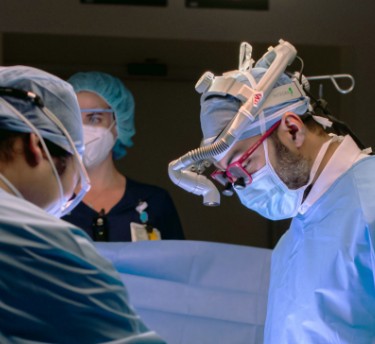Our Doctors
Meet all our doctors at Cleveland Clinic Abu Dhabi.
View Doctors

Thanks to recent advancements in technology, the diagnosis, treatment and management of thoracic diseases has significantly improved. Click here to learn more.
Some of the latest breakthroughs include:
At Cleveland Clinic Abu Dhabi, we offer the very latest, cutting-edge diagnostic procedures. This ensures a timely and more accurate diagnosis of thoracic diseases. Diagnostic procedures for airway and chest wall conditions include:
Diagnostic procedures for esophageal or swallowing conditions include:
Treatments for airway and chest wall conditions include:
Treatments for esophageal or swallowing conditions include:
A multidisciplinary team of experts at the Thoracic Diseases Program are involved in the diagnosis, treatment, and management of lung, chest, and esophageal conditions. The team may include specialists from various fields working together to provide comprehensive care tailored to each patient's specific needs. The team takes a collaborative approach to ensure patients receive the most appropriate and comprehensive care, leading to better outcomes and an improved quality of life.
The multidisciplinary team consists of: